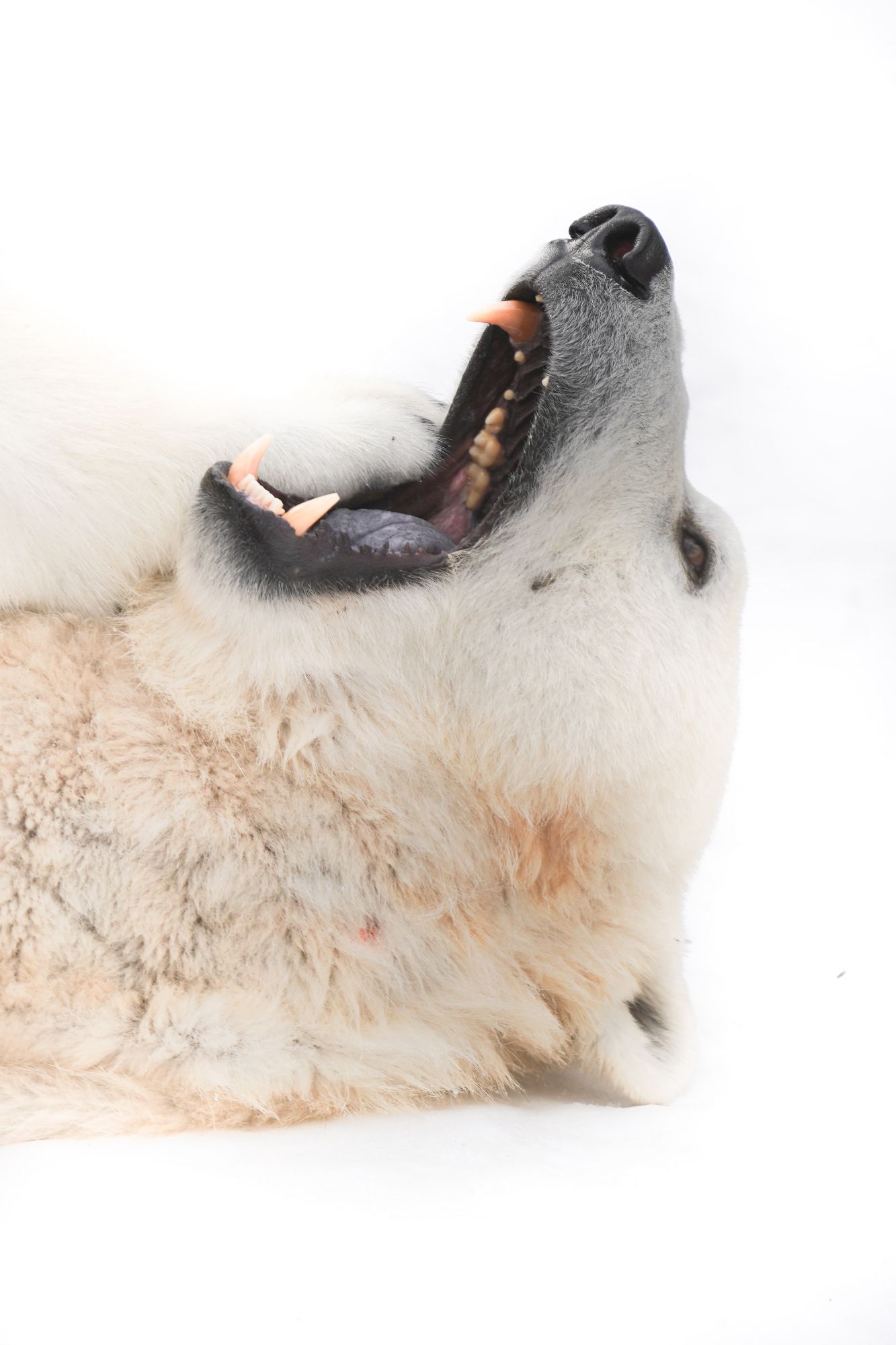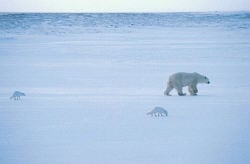Polar Bears need you!
Polar bears are top of the food chain in the Arctic and they are telling us that something isn't right. We need to protect sea ice -polar bears and many other species need it to survive.
Polar Bears International work to help secure a future for polar bears across the Arctic. And the video below shows what they achieved for polar bears in 2024 - as they say, all thanks to supporters' generosity and help.
#InternationalPolarBearDay
#PolarBearDay
#ProtectMomsAndCubs
Looking to the future
The key to saving sea ice for polar bears and getting the climate back to functioning the way it should is to get away from using fossil fuels for energy all together.
Polar Bears International
"Drill, baby, Drill" is not the answer to help polar bears or sea ice, or the natural world around us. Nor is destroying our natural world and the ecosystems on which humans and animals depend.
Polar Bears International are asking us all to take actions such as:
Involve yourself in projects in your communities to replace fossil fuels with clean energy. What are your local and regional renewable energy options?
Let's make constructions more energy efficient. What can you do at home, at work, in schools, in life?
Support projects aimed at reducing the number of vehicles and the options available to us all to use public transport.
Some reading and watching...
February 2025: New Study: Indigenous knowledge shares new insights for human polar bear co-existence
Read Polar Bears International's 2024-2025 Annual Magazine
Watch the BBC's Where the Polar Bears Wait on iplayer
August 2024: New population of polar bears found!
Read all about it: Researchers have analyzed all of Canada’s polar bear populations and they've discovered that the most northern polar bears are less likely to be able to adapt to the rapidly warming Arctic.
A new study predicts a troubling future for the polar bears of Hudson Bay. Scientists predict the localised extinction of polar bears there if the Paris Climate Agreement is breached. A team of biologists and climate scientists re-evaluated the future of the sea ice, polar bears and seals of Hudson Bay. Find out more here.
On 1 November 2024, there was also news that climate change could be causing some of the ice to injure the feet of polar bears. Find out all about it here.
With the help of the San Diego Zoo Wildlife Alliance and the Norwegian Polar Institute, Polar Bears International deployed remote camera systems in 5 (or maybe 6) polar bear dens. These will give a vital insight into the time when polar bear families emerge from their dens - a challenging time. Find out more here
Polar Bears International undertake research - it's a vital part of their efforts to secure a future both for the bears themselves and for our sea ice. They do population studies to find out how polar bears are faring, they research ways to keep both people and polar bears safe, so reducing conflict between them, they undertake genetic studies, and their tech-savvy staff and the creative partners they work with use innovative research methods which benefit both polar bears and other wildlife too! Find out more here.
11 ways to help Polar Bears
What’s Really Happening To Polar Bears During The Climate Crisis? IFLscience.com teams up with Polar Bears International to find out (6th July 2023)
Polar bears...
Why are polar bears important and how to save polar bears from global warming
Listen to this TED Talk! Alysa McCall, Director of Conservation Outreach and Staff Scientist with Polar Bears International, took part in a TED@Destination Canada event. Alysa’s talk focused on human-polar bear co-existence which is an increasingly important part of PBI’s work.
Bring polar bears into your heart and mind. One way to do this is to adopt one - I adopted a polar bear and just thinking of her got me taking action to reduce, reuse, recycle etc. I turned the heat down to help her. You can watch polar bears on webcams, take part in awareness weeks, and learn about the area of the world they live in to get an idea what it's like. Find out how to connect with polar bears here.
Even now - despite all the talk and television - many people just don't register what the threats are to the Arctic and how important it is for all our sakes to preserve it and all life there. Polar Bears International have three great tips for talking to people about the challenges facing polar bears – just share your concerns. Focus on what draws you together and connect those things together. Find out more
4. Be aware of the challenges facing polar bears.
Discover all about polar bears and the conservation challenges they face - there are more than we think. Pollution, disease, human-polar bear conflict, commercial activity (e.g. drilling for oil and gas), conflict with people all impact on polar bears and other life. Polar Bears International and Arctic WWF have more information so please pay them a visit. The loss of sea ice is the biggest threat to polar bears. This video shows the extent of sea ice loss in the Arctic over the last 25 years.
5. Who else lives in the Arctic? Discover more about them
Sea ice in the Arctic isn’t just about polar bears – other animals are affected as well who need sea ice to survive and thrive such as beluga whales and Arctic seals, Bowhead whales, walrus, reindeer and caribou, and the narwhal. Local people depend on the sea ice for transport. Find out more with Arctic WWF.
Polar Bears International is the only charity totally dedicated to wild polar bear conservation. They know polar bears--their habits, their ecology, their threats--and are recognized leaders in their conservation. Made up of a small group of passionate conservationists, scientists, and volunteers, PBI exists to help secure a future for polar bears across the Arctic. Spread the word, especially about how people can get involved and help.
7. Be a part of the solution!
There are plenty of things we can all do to help. Promote clean transport, support an energy change - even just to talk about it will help raise awareness. Look at your own lifestyle to see what you can change - you can work out your carbon footprint and set yourself mini-goals or dramatic ones to be the change you want to see in the world.
A reduced global temperature will lead to a decrease in the speed at which the Arctic ice is melting, so it's important to reduce fossil fuels as much as we can. Looking after the natural world on the planet will help the health of the planet all over the world. Trees, rainforest, seagrass, peatlands, wetlands and other habitats all keep the planet healthy and they matter.
8. Get signing and put pressure on politicians
Polar bears have no voice, so we all need to stand up for them and put pressure on those decision makers who could make a difference.
Things you can do to help polar bears
- Think before you buy - do you really need what you're about to purchase?
- Reduce your use of fossil fuels wherever you can
- Recycle, reuse, reduce wherever you can
- Check your carbon footprint - what is it now?
- Develop a plan to reduce it as much as possible
- Support charities in their efforts to raise awareness and to fight for polar bears.
- Be a voice for polar bears. Every bear matters.

Introduce your charges to the joys of nature in the Arctic and the challenges facing polar bears and other wildlife. Polar Bears International have all you need. This is your chance to make a difference and inspire children to be the conservationists of tomorrow, whether as a career choice or as a volunteer or as a guardian or steward of the planet
Adopt a polar bear! Adoptions start at $25 with Polar Bears International, and you can do an eco-adoption. I’ve adopted a polar bear before and kept thinking about “my” bear and how I could help look after her. Adopt a polar bear today. (Image pictured right is copyright Polar Bears International.) You could also send an e-card. Or why not become a Polar Bear Patron with a monthly donation?
11. Eat less meat and animal products
Viva is a vegan charity and they produced this video explaining how our eating choices impact on animals such as the polar bear. Take a look. You can visit Viva's website here.





